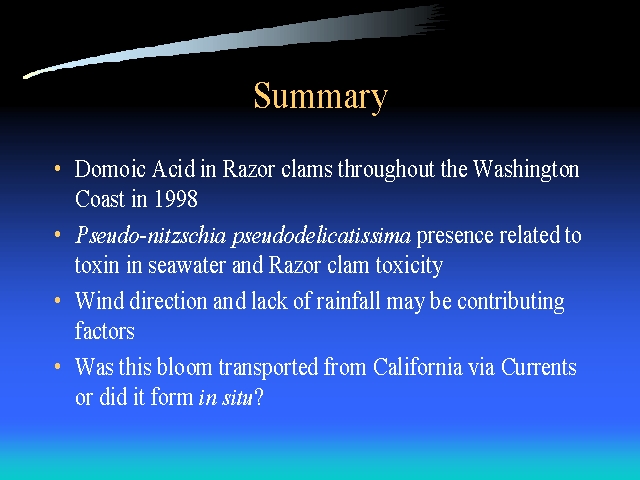Slide 16 of 17
Notes:
-DA in Razors throughout the Coast� -Various levels
-P. Pseudodelicatissima presence related to toxicity of seawater and razor clams� -Wind speed, Direction, and Rainfall appear to be likely influences� -Questions� -Transported from CA? Can’t tag plankton like fish.� -Form in situ?� -Weather patterns responsible?� -Is the CA and WA relationship coincidental?
In summary, Domoic acid was detected in Razor clams throughout the Coast of Washington at various levels. The presence of P. pseudodelicatissima is related to the presence of toxin in seawater and razor clams. Winds and rainfall appear to have played a roll in the bloom.
We are also left with a few important questions:
Was this bloom transported from Calif.? Unfortunately, we can’t tag plankton like you can tag a fish.
Did this bloom form off the coast of Washington then advected on to shore? Some indications are that the California bloom involved Pseudo-nitzschia australis, while little or no P. australis was detected off Washington—mostly P. pseudodelicatissima.
Exactly what are the influences of weather patterns?
Are the California and Washington events just coincidental or are local cell blooms being driven by the same physical climatic/oceanographic processes?

















